-
Posts
4,724 -
Joined
-
Last visited
-
Days Won
116
Content Type
Profiles
Forums
Resource Library
Events
Gallery
Blogs
Store
Community Map
Posts posted by Mayner
-
-
1 hour ago, Flying Snail said:
I picked up some MDF recently for a different (non-railway) project, and I found it to be very heavy when compared to plywood. You should find both in Woodies, but I'd consider going with ply over MDF for that reason. If you use timber bracing to stop it bending, something in the 6mm to 12mm range should be okay
While MDF because of its weight has good sound deadening qualities, the downside is that unless you use water resistant MDF it swells and distorts if it gets wet.
I generally use a 5-7 ply plywood preferably Birch or Scandinavian in the 12-18mm thickness for strength and rigidity, though I recently used 9mm finished ply on a plywood framed layout on a portable layout. I generally install cross members on a ply or timber framed baseboard at 600mm centers.
In the past I had MDF baseboard surface swelling when I used a PVA and water mix while loose ballasting a layout and problems with drumming and sagging when I used 6mm ply as the trackbase on a layout about 30 years ago. At the time I used to glue the loose ballasted track to cork underlay which contributed to the drumming
These days I use dense foam (camping ground sheet) underlay with ply baseboard surface/trackbase with track glued (not pinned) to the baseboard to prevent drumming.
-
 1
1
-
 1
1
-
-
2 hours ago, Noel said:
Where will it all end Ted? Fortunately, my collection days are just about over, I’ve enough stock now to see me through future projects and to EOL.. Not happy at potential costs for our grand children developing an interest in the hobby. They’ll get my stuff anyway, but I’d prefer they start small and learn the joy making stuff themselves.
Looks like "Everything is Awesome" now the White House claiming that they reached a 'trade deal' with China, https://www.theguardian.com/us-news/2025/may/11/us-china-trade-talks-geneva-intended-de-escalate-tensions-lutnick,. I guess someone on the US side realized that China banning US food exports and 'essential mineral' exports would piss off powerful interests in farming/agribusiness and within the 'defense' sector.
I guess its likely to have no long term impact apart from possibly higher prices for the 'model railway industry' , though possibly China setting up a small number of 'high tech' manufacturing plants in 'rust belt states' in a similar manner to Japanese companies setting up assembly plants in the States and the UK during the eighties after Japanese imports decimated the UK motor industry, Honda Swindon, Nissan Sunderland, electronics plants Telford.
Main issue is that US and British Outline tends to sell to an older demographic of collectors who may end up having to dispose of their collections as they go into retirement homes before reaching the deceased estate stage, so potentially a glut on the second hand market. One friend in our Garden Railway Group bought/acquired several friends collections as they got older/passed on before loosing interest in the hobby (active in model boating) then passed on his collection to former group member, one mainly model Die-Cast retailer/dealer makes no bones about specialising in deceased estates. Though according to the IRM guys their sales were to a younger demographic than Accurascale.
Like everything else as I get older I have accumulated more model railway stuff than I can handle/deal with, unless a child is from a reasonably wealthy family cost has always been a barrier to entry to the model railway hobby, but the younger members on this board demonstrate a high level of ingenuity and creativity. When I got my first 'proper' train set (Triang-Hornby) as a 12/13 year old it ran on battery power for the 1st year until I saved up enough pocket a transformer.
Like many 'older people' I am probably getting to the stage of having more models than I can comfortably manage or appreciate in my collection though I continue to buy/assemble the occasional model.
I would not be too worried about the younger generation, model railways has always been an expensive hobby for a youngster getting started, they will find a way into the hobby if interested, the younger members of this group demonstrate a high level of creativity and ingenuity in their modelling. I got my first proper trainset (Triang-Hornby) at 13, but quickly got involved in 'modelling' as I loved taking things apart & sometimes managed to successfully re-assemble them, largely dependent on buying second hand until 19 when I had a paying job. Railways becoming 'less interestin" from the perspective of an older generation does not seem to be a factor the same argument seems to have been going on for many years, interestingly some of the younger members of this Newsgroup are interested in modelling the steam era (& lines that closed) 60 years ago!
-
 1
1
-
 1
1
-
-
1 hour ago, LNERW1 said:
That's such a lovely snapshot of the early 70s- or at least I assume that's the time period we're talking! Everything down to the half-hearted hi-vis jacket worn by the wonderful gentleman presenting.
The half-hearted hi-vis jacket takes me back to the mid 80s working for an Irish owned groundwork company on a Tesco construction site in London, possibly Wates as main contractor. At the time H&S was pretty much a top-down thing the main contractors managers wore hard hats and possibly hi-vis, safety gear (apart from boots (your own) pretty unknown for the contractors men (very few female construction workers then) till an edict went out that we had to wear high vis, it was mid winter and for several weeks I customarily wore an army surplus coat as my cloak of invisibility over my half-hearted hi vis jacket and no one form management said a word.
Anyway Bob Symes was an excellent presenter and a highly creative modeller who brought a sense of adventure to the hobby , I think he was involved in the building of diesel-electric powered Gauge 1 Class 47 a loco and possibly a diesel-hydraulic powered Class 35 or Hymek diesel. There was a series of articles on the building of the Class 47 with wonderful graphic (possibly hand drawn) illustrations in Model Railways magazine in the Mid-Late 70s, yeah those were the times!
-
 1
1
-
-
The chassis on the GSR Bredins & early CIE built stock were different in detail. The GSR Bredins basically had a 60' version of the 57' riveted underframe used in late GSWR/early GSR stock with vertical kingposts and bracing rods with turnbuckle adjuster.

Bredin riveted underframe with Kingposts & truss rods with turnbuckle adjusters.
CIE used an all welded underframe with welded trusses. To complicate matters further CIE built the 1st batch of coaches on a 60' underframe and subsequent batches on 61'6" underframes, the final batches of CIE "Bredins" ran on Bulleid underframes on Commonwealth bogies just like the Park Royals.

CIE all welded underframe with angle iron trusses.
Simplest solution would be to use Stanier coaches in GSR or CIE livery to produce a generic "layout train" to run behind an 800 or someone with very deep pockets commissioning Accurascale to produce a mixture of ex-GSWR early GSR and Bredin stock that typically ran on a GSR or CIE steam era passenger train with few vehicles alike.
Otherwise David Jenkinson book on scratchbuilding coaches in plasticard, David seemingly seemingly vast numbers of highly detailed ex LNWR, Midland and LMS coaches for his 4 & 7mm Settle and Carlisle themed layouts during the 1970s including models of specific 10-12 coach main-line rakes. His shortlived EM Little Long Drag layout of the 1970s was basically an American style walk around layout in a British purpose built garden shed which featured several stations actual and a fictious Junction on the Settle & Carlisle line, featuring several prototypical full length trains all using scratch or kit built locos and stock. The layout didn't last long the owner realised that it was too big to maintain and upsized to a simpler O gauge layout.
-
 3
3
-
-
Kiwirail ordered 66 DMs from Standler with a follow up order for 24 Battery Electric locos for shunting services.
https://www.kiwirail.co.nz/media/kiwirail-partners-with-stadler-for-new-low-emissions-locomotives/
I
-
 2
2
-
-
15 hours ago, Mol_PMB said:
If the numbers on the decorated samples are correct, the selection of 17194 as one of the brown livery vans is puzzling, as it was one of the predecessors to the H vans: a batch of 200 built from 1946 on conventional (non-triangulated) chassis, with much longer brake levers and lacking the grid of bolts on the bodysides. Otherwise these earlier vans look nearly identical to the H vans. I only spotted it because I had already made plans to model this particular vehicle myself by putting a slightly-modified IRM H van body on a modified Parkside chassis.
Although similar in appearance to the Bulleid H Vans the 200 1946 vans were quite different in construction basically an updated 10' wb version of the GSWR vans introduced in 1917 with the timber planking obscured with sheet aluminim cladding. CIE re-skinned some older vans with sheet aluminium cladding including the 1917 'standard' design, some of the older longer GSWR "Big Boy" vans & even some ex-GNR.
There is a photo of one of these vans under construction in the Inchacore 150 Book "The Works". Aluminium over planking may have been a post WW11 econmy measure, plentifull supply of aluminium (intended for aircraft production) combined with a scarcity of quality hardwood available for wagon building. GNR coaches built during the same era tended to have hardboard or "Masonite" body cladding on softwood framing which later lead to decay and scrappping.

Comparison of an IRM 'Fitted" Van and one of my 1946 Vans. Mine based on a Herbert Richards drawing of a 1946 van appears larger by the IRM model the 1917 GSWR vans appear taller than the Bulleid Vans in photo of the prototype.
I guess its time to think about 'retiring' my collection of 21mm gauge H Vans modified from the Parkside Van kit about 30 years ago & some GSWR Vans modified from Coopercraft GWR Van kits around the same era.
-
 3
3
-
 2
2
-
-
42 minutes ago, jhb171achill said:
Worth a reminder to perhaps our younger colleagues here, used to seeing modern goods trains which comprise a dozen identical vehicles and nothing else.Apart from the fact that a traditional goods train of four-wheeled loose-coupled vehicles could have 34 wagons of 32 different types, it’s worth pointing out that ALL of them had a brake van.
Running a train of older wagons either no brake van on the end is as ridiculously inaccurate as Stephenson’s Rocket hauling an ICR, or a Tara Mines train happily running round the layout with no locomotive.
Thankfully, we’ve had JM Design and Provincial Wagons to bridge this absolutely ESSENTIAL gap.
Apart from the fact that it does us all a common good to support these small manufacturers, we actually need these things for any credibility on any layout.
The challenge for a rtr or kit manufacturer is to sell enough of a particular model to make it worthwhile in a competitive price. Thus IRMs focus on selling multi packs of almost identical wagons and earlier focus on 'modern' block train wagons like the Ballast & Cement wagons where the average customer might buy 10 or 20 rather than an individual wagon.
While JHB pointed out that the average traditional goods train could have 34 wagons, well 50-5 max on the Cork line or Midland, it was likely to have only one goods brake or possibly a second if the train reversed or divided in route. So potentially a retailer selling 1 Brake for every 10 H Vans or Opens sold, so in the Irish outline market a Brake Van would struggle to reach 2500-3000 to break even let alone a profit.
Personally I suspect a lot of buyers of RTR models(and kits for that matter) are collectors who have no real interest in running models let alone prototypical accuracy, after-all how else can you explain a person buying 12 different versions of the same locomotive, or the surge of sales on e-bay soon after a model goes on the market or sells out.
Interestingly many years ago when I had a large American outline N gauge, visiting operators quickly got bored with prototypical operation and loved to literally race trains around the layout at the end of a formal operating session, the challenge was to keep two trains (15-20 car freights) running as fast as possible continuously run layout with mixture of fairly long (15-20') single and double track sections (without stopping)
I am as guilty as anyone else I have a large collection of N and 4mm models in display cases around the house and boxes of IRM and MM models that I have never run and at this stage getting less likely to run.
-
 7
7
-
 1
1
-
-
1 hour ago, mphoey said:
just ordered wonder when we will see a brake van seeing as the ammount of freight wagons that have been done now
Recently I had suggestion from within Accurascale that it would be a good time to do a small repeat run of my 20T Brake Van.
-
 1
1
-
 2
2
-
 5
5
-
-
On 3/5/2025 at 6:06 PM, David Holman said:
Looking at one of your earlier pictures, the loco only has three link couplings, so chances are it might also only have a mechanical hand brake, operated by a wheel in the cab, as per a steam loco.
Presumably, when the Gs were used to operate mixed trains, a vacuum or air brake must have been fitted, along with screw link couplings. Given that there were two batches, could this have been fitted to the later ones from the start? There were other differences too, in cab windows.
G601-3 were acquired as part of an experiment to operate goods trains on the Banagher, Newmarket and Castleisland branches on which regular services ceased during the 1947 fuel crisis. G601 survives with the ITG https://www.irishtractiongroup.com/loco/g601 members who have worked on the loco should have information on the braking system. I measured up the loco at Carrick before the cab and engine housing was encased in metal cladding.
Apart from 3 link couplings, no train brake and different cab windows the arrangement of shunter's steps and running plate at the front of the loco is different between the G601 & G611 Class.
One G611 Class duty was Liffey Junction Pilot which included a weekly? Edenderry goods working and occasional goods trains on the Meath Road after Clonsilla-Navan closed to regular traffic (62 or 63) The final goods working over the southern section of the Meath Line was a Liffey Junction-Drumree Cattle Special with special permission to load to 15 wagons, nothing heavier than a G allowed because of the poor state of the track! The G ran to Kilmessan to recover a single wagon after placing the cattle wagons at Drumree. Apparently the rails on the cattle bank sidings at Drumree were grass grown the G struggled to achieve traction and some teens from local farms helped by push the loco and laden wagons out onto the 'main line' There is an account of the story by 'Spare Link' in one of the Great Southern Preservation Society newsletters of the 80s
-
 4
4
-
 1
1
-
 2
2
-
-
Visited the Manifold Valley several times 25-30 years ago while railfanning in the Peak's. I think the loco shed was part of a Council road depot 1st time I visited Hume End, but a miniature possibly 3"½' gauge was set up at the Waterhouse end of the carpark leading back a hundred or so yards on the trackbed, being me it was late afternoon/evening & no one was around. Yes drove several times through the tunnel and last time I was over cycled from Waterhouse to Thors Cave.
Although close to the cities of Stoke and Greater Manchester the Manifold Valley is remote largely accessible by the Manifold Trail probably one of the first of Britain's rail to walking/cycling trail.
This was well before the days of the re-opening of the Cauldon Low Branch as a heritage railway, although out of use the semaphore signalling system at Leekbrook Junction and the yard and ground frame at Cauldon Low intact.
-
 1
1
-
-
22 hours ago, StevieB said:
I assume that the one preserved at Cultra is the GSR predecessor.
Stephen
The Cultra Van is a bit of an odd-bod an all metal body on a GSWR underframe possibly a one off once used to house (steam cleaning?) plant off rail in the Ramps area of Inchacore.
I must be beginning to get old took the photo almost 50 years ago.
Fitted vans could be used as part of passenger and mail consists to carry mail and other such items. They were also just used as regular H vans as a part of an unfitted freight consist IIRC.
On the Brake Van question all CIE goods trains Fitted, Unfitted or Partially fitted which included traditional wagons like H Vans would have run with a Brake Van.
The North Wall-Waterside "Derry Vacuum" was officially a fully fitted goods hauled by a CIE loco to & from Lisburn with MPD or 70 Class working the train to and from Waterside, though one of Jonathan Allen's photos shows an MPD Power car shunting unfitted H Vans at Waterside.
On trains like the mails a number of Fitted wagons were allowed run behind the Coaching stock, I have a photo of an Up Sligo mail approaching Ballysodare behind B149 the train made up of a 4W Tin Van (Heating & Luggage) in Black and Tan, what looks like an ex-GSWR side Corridor coach in late 50s Green, a Bogie TPO possibly ex-GSWRin light green & 3-4 H Vans.
Initially Block Trains of Cement Bubbles ran with a Goods Brake Van before CIE & the Unions agreed for the Guard to ride on the loco, riding in a Brake Van at 50mph at the rear of a goods train would not have been a comfortable or safe working environment. The CIE 20T Brake Van introduced in the 50s would have been preferred over the 30T Vans introduced in 1960s which had a problem of running hot boxes (overheated bearings) until later fitted with roller bearings, the unlined( uninsulated) all steel interior would have been an uncomfortable working environment too cold in winter, too hot in summer likely to have been avoided by staff unless nothing else was available.
Why is the pricing in GPB?
Possibly a Taranaki thing; pricing appears in $NZ in the Waikato even without logging in, though a US Shopify site thought I was in South Africa and displayed prices in Rand.

-
 3
3
-
 3
3
-
-
One of the supreme ironies with the current situation is that American experts (Demming, Durand et-al) pioneered the concepts that allowed American businesses to offshore their manufacturing the Far East and China.
Ironically these experts were largely ignored in the US but taken seriously by the Japanese during the post World War re-build, at the time it was probably thought that the World would be safer if the Japanese (and other defeated axis powers focused their energies) on manufacturing motorbikes cars and radios.
I was once sat in the canteen of a major Ford dealership in Dublin during the 80s and one of the managers questioned who really won the War pointing to the nearly Audi-Volkswagen and Nissan plants.
Ironically these methods were adapted by the US Navy in the 1980s rebranded as Total Quality Management or TQM. JIT was basically using subcontractors to manufacture the components for delivery to the assembly plant just in time, classically in Japanese mini vans.
Atlas is an interesting one shifting (loco) production to Italy (Rivarrosi) 70-80s, Austria (Roco) 70-80s Kato (Japan) during the 80s and China mid 90s. A similar lower priced Model-Power range was produced in Yugoslavia but does not appear to have survived the break up and civil war.
The N scale Con-Cor PA1 & Atlas N Scale RS3 both manufactured by Kato were transformative in terms of detail finish and running (center motor twin bogie drive) the running of the Kato locos best described as impeccable, Atlas 90s Chinese production was even more refined in finish with extremely smooth low speed running but sounded like a tractor, their early 2000s era Chinese production was utterly transformative.
Interestingly Trump is already being portrayed as the Grinch in the US Media https://www.usatoday.com/story/news/politics/2025/04/30/trump-china-tariffs-toys/83372961007/ , my wife and her mum (staunch Democrats) from the Mid-West religiously watch the Boris Karloff version of the Grinch on Christmas Day
-
 2
2
-
 1
1
-
-
57 minutes ago, murphaph said:
I'm about at the limit of what I'm prepared to pay for models. I could not justify €300 a loco type prices. That's the message from these companies and it takes a brave CEO in the US these days to stand up to the current regime so kudos to the leading figures in our hobby having the bravery to do that. The industry depends on lower cost labour and a certain skillset. If China is "taken out", it would take them out of manufacturing so many other more important things that finding replacement manufacturing capacity for models & toys would be right down the bottom of the world's list of priorities. Our RTR hobby would basically be gone or be the preserve of the very wealthy and they would have to settle for a vastly reduced assortment. It's simply not possible to exclude a billion+ people from the world economy and expect things to somehow continue as before. China is not North Korea.
China has been stressing that the US market makes up about 15% of its total export market and so could potentially compensate by increasing exports to the rest of the World, China has no hang ups about subsidising exports to other countries. Interestingly imports from China make up about 16% of US imports. Imports are prodimently Hi Tech most likely assembled on automated production lines so unlikely to be an army of redundant workers to divert to 'defence'
China has been very effective of expanding its influence using soft power to finance and build infrastructure in the Global South and Pacific and has caught The United States, Australia and New Zealand off guard by successfully negoting agreements with Pacific Island Nations in what was presumed to be their 'sphere of influence" China and Japan has an advantage over Europeans due to the similarity in culture and way of doing business with Pacific Island nations. The Chinese pissed off Australia recently by conducting live firing naval exercise in the Tasman Ocean of the East Coast but more a posturing exercise than anything having already signed a 'Strategic Partnership Agreement" with the Solomon Islands which includes security and law enforcement, together with China owning some of Australia's ports.
The real cost of on-shoring clothing, engineering and toy manufacturing to Western countries would be a singificant increase in the cost of living and decline in living standards in the West, East South East, Asia and India and most likely a dramatic increase in poverty and malnutrition in the Global South. Unfortunately the United States is slipping towards totalitariansim lead by a bunch of grifters that would make teach the average African Kleptocrat a lesson or two about lining their own pockets.
-
 4
4
-
 1
1
-
-
Recent delivery advice from Accucraft that they are honouring the pre-sale price of $2500 for the 1:20.3 scale live steam Australian "Puffing Billy' 2-6-2T to US Customers regardless of recent tariffs.


April 23rd, 2025

Accucraft Victorian Railway NA Class, Baldwin 2-6-2T



We are pleased to inform you that the Puffing Billy is finally ready to be shipped!
Thank you for your continued interest in Accucraft products and for your patience throughout the process. The model is absolutely gorgeous, with exceptional attention to detail and finishing. Our team have done a wonderful job producing one of the finest models we've ever offered.
We are also happy to inform you that, despite the recent tariffs, we are honoring the pre-sale price until the May 2nd. Accuracraft is a US owned business with its own factories in China

Subscribe to our Youtube Channel 




 Accucraft reserves the right to change prices, colors, specifications and availability without notice.All items are FOB Union City, CA unless otherwise stated.Live Steam Station33260 Central Ave, Union City, CA 94587510-324-3399 • sales@accucraft.com
Accucraft reserves the right to change prices, colors, specifications and availability without notice.All items are FOB Union City, CA unless otherwise stated.Live Steam Station33260 Central Ave, Union City, CA 94587510-324-3399 • sales@accucraft.comInterestingly while I was staying with family in North Dakota during January the Canadian Pacific was loading a 100 Car Train with grain for China at one of the local elevators. A farmer told me that most of his grain goes to the Far East and the US Government will buy his surplus production if he cannot find a buyer on the open market, a Trade War could work out more damaging to the US than China.
-
 1
1
-
 1
1
-
-
Having produced kits and rtr models for 15 years with marketing through social media, website and New Irish lines.
Sales of kits have been primarily been to a group of regular UK based customers by social media (mainly this Newsgroup). I suspect the majority are attracted to Irish Outline because its considered more interesting and challenging that modelling British Outline.
The majority of RTR sales were through my website, this Newgroup the most effective in terms of marketing. One of the quirks was that samples supplied to model railway clubs generated few sales, a member of one club commented that he 'could not see the point' of buying an Irish outline wagon while plenty of British RTR wagons were available at a lower price.
Interestingly used to get occasional enquiries on Facebook usually from the States requesting a valuation claiming that they had JM Design model trains from their childhood

Demographic wise RTR sales broke down fairly evenly between Ireland & the UK----respectively 45% & 40% with 15% from USA with rest of the World marginal.
While Irish and UK customers tended to buy 1 or 2 items, US customers consistently tended to place larger orders.
When all is said and done Irish Outline is a tiny compared with the British and American outline markets and the IRM founders strategy of testing and establishing a presence in the UK market allows Accurascale to produce Irish Outline models.
From small beginnings Irish owned multinationals have become world leaders in building materials (Roadstone) dairy and food (Glanbia and Kerry) engineering consultancy (MF Kent) Construction (Laing O'Rourke) so why not model railways?
-
 10
10
-
 1
1
-
-
Great to hear that your Knockloughrim diorama has found a (hopefully permanent) home in the actual station.
-
 1
1
-
-
Ex-GNR (express passenger) locos are likely to have been used on the 'Trial Train' (newly overhauled coaches) between Inchacore and Portarlington up to the end of steam on CIE or sold to the UTA. So potentially a legitimate reason for running an S Class, Compound & Vs at speed other than an enthusiasts special on the GSWR main line
-
 2
2
-
-
15 hours ago, Galteemore said:
If RM Web is our datum line as a heuristic of what UK modellers are interested in, you’ve actually more justification for posting French models than Irish ones. The French section on RM
Web has 27 pages of content, the Irish 21. Both dwarfed by North American section which has 156 pages……I was an NMRA (National Model Railroad Association) British Region member when I lived in England during the 80s & 90s, the British Region organised an Annual Convention and was divided into groups that organised local 'Meets' at regional level in the UK. The Meets and Conventions were basically private exhibitions often featuring modular layouts where members could bring and run their own stock (play trains), and a swap meet which included specialist American Outline retailers and second hand stands, the retail side usually best described as a feeding frenzy. At the time Victors (Islington) & MG Sharp (Sheffield) were major retailers, LSWR models a major mail order supplier, Totally Trains (Ross & on Wye) and Mac's Models (Alexandria nr Dunbarton),relative newcomers in the American Modelling the scene, not forgetting the Belfast Caboose and an American Outline retailer in Bodmin (Cornwall) & possibly others I have forgotten
Back in the 80s American Outline models N & HO models tended to be of better quality than British outline models in terms of finish, detail and smooth running major American brands like Atlas & Walthers moved their production from the US to Europe and eventually the Far East. The majority of American locos ran reliably out of the box and the major brands adapted NMRA wheel and track standards as there was a fundamental expectation among American outline modellers, that the different brands of locos and stock should 'interchange' reliably just like the prototype.
Going back to Scandinavian models, I hooked up with a lady of Scandinavian-Germanic origin over 20 years ago. Best described as strong minded put manners on most Irish lads, though most Irish and British people have some Scandinavian-Germanic DNA given the antics of our ancestors 1000 or so years ago.
-
 1
1
-
 1
1
-
-
I guess 10 years after the launching of IRM the founders of IRM and Accurascale understand the limitations of the Irish Outline market and whether or not it was worthwhile to market Irish outline models on the UK Exhibition circuit.
There is an interesting contrast between the rapid expansion of Accurascale from a start-up to a major British Outline brand over the past 4-5 years with a mixture of modern image, steam era and industrial models (locos and stock) compared with the more gradual expansion of the IRM range following the initial period of rapid expansion up to the release of the 001/A Class.
Interestingly while there were 93 and 96 responses to IRMs launch of the NIR Hunslets & GSR/CIE 800s respectively there are currently 1900 and 9800 replies currently to launch of the Accurascale BR Class 50 & Class 37.
One of the IRM founders commented that their British Outline loco or wagon sold in significantly higher quantities than a similar Irish Outline model, possibly a 5-1 ratio, around 2020-21 Patrick told me that demand for Accurascale their British Outline wagons made IRM look like a cottage industry.
-
 2
2
-
 3
3
-
-
In the post 1960s era the three largest groups of Private Owner wagons to run in Ireland would have been the ESSO Tank wagons 971-1013 imported from the UK in the late 60s, Tara Mines ore wagons 31001-31025 & NET Ammonia Tank 32001-32020 wagons leased from Storage and Transportation Systems (STS)London
There were also a number of CIE owned Branded wagons introduced during the 70s, Burmah Oil Tank Wagons 26723-26728, Pallet Cement Wagons 28001-28172.
While IRM have released a model of the ESSO 35T tank wagon it is of the unbranded version of the wagon with modified tank mounts and hazard markings, rather that the original version introduced in the late 60s with original pattern tank mounts and raised ESSO shield and logo https://www.flickr.com/photos/irishrailwayarchive/53527716615/in/album-72157661623942928. For people without access to the IRRS Flickr album the ESSO Teo tank wagons were visually similar to the UK Class A tank wagon with ESSO shield and simplified markings/lettering.
IRM have already released the Tara wagons in their original blue livery witt Tara logo.
Whatever about the Ammonia and Burmah tank wagons, the Pallet Cement Wagons appear to be a significant gap in RTR wagons for the late 70s early 2000s era with the original version with Irish Cement logo and balanced doors, and later unbranded versions with balanced doors and curtain sides.
For the modeller with a main line oval layout in a restricted space the Tara Mines and Ammonia Tanks short train behind a 001 Class entirely prototypical.
Going back to the County Down a series of papers on BCDR private owner wagons was published (Des Cookham?) was published in the IRRS journal in the late 60s early 70s, apart from the East Downshire the common thread was the use of private owner wagons to transport stone to Belfast during the 19th Century, a "Dr Richie" was one of the major quarry owners. The Dublin and Blessington served a similar function transporting roadstone and sand to Dublin, interchanging with the DUTC at Terenure goods trains ran through to destinations on the electric tramway system hauled by electric loco/works tram.
-
 1
1
-
-
I friend once spoke about building a monochromatic North Wales narrow gauge diorama as the historic photos were mainly black and white! Gets over the argument over prototypical shades, but potentially challenging to execute.
-
 1
1
-
 1
1
-
-
Couple of photos of G617 with a single Laminate Brake similar to that used on the Loughrea Branch from 63 onwards. The coach was built from a Worsley Works set of parts, I took an each way bet with my 3 WW coaches finishing one side in late 1950s green & one in black and tan.
Roof is a Comet BR MK1 extruded aluminium roof cut down the centre, widened to fit the profile of the WW shell, the resulting gap made good in motor body filler supported on a strip of plasticard, detail castings and interior Comet & MJT with some pre-painted Scale Link passengers, bogies use MJT coach compensation units widened to 21mm gauge, made a bit of a hash of forming the tumblehome. These days I would probably use a 3D printed roof.
Interestingly when G613 and Laminate 1910? took over branch line working the loco was in the Black & Tan scheme and the coach in light green!
-
 11
11
-
-
9 hours ago, Noel said:
Hi Richie. Respectfully there was an error with the coupling height on the ballast wagons and the cement bubbles (inc ploughs that shared a common chassis). It wasn’t about running problems, it was about NEM compliance and incompatibility with Kadee couplings. This might have been a hangover of the unfortunate DJ input to IRMs first product which were the ballasts
Back in the day before the Ballast Wagons were released IRM issued a press/media release in the Modelling Press that it was not feasible to fit the NEM pocket at the recommended height because it clashed with the brake gear detail at one end of the wagon & had adapted a lower than reccommended pocket and a cranked coupler as a solution.
Interestingly Kadee's title page on European NEM HO OO conversions features a photo of IRM/Accurascale Ballast wagons https://www.kadee.com/convpl apparrently fitted with Kadee NEM 363-Series Adjustable Height Couplers.

The Kadee NEM coupler Fact sheets recommends fitting a 363 series coupler in combination with 362 series adaptor in cases where the NEM pocket is not installed at the recommended height.


-
 2
2
-
 1
1
-
-
Managed to sort make some time to complete the overhaul of th G Class, though I need to order some replacement decals from Des as the originals have worn off with handling.

The loco was originally fitted with Kadee 30 Series couplers which had a draft box mounted on the chassis and I decided to change to NEM pattern mounts, which basically involved plating the slots I formed in the buffer beam when I built the loco many years ago and forming a cutout for the NEM coupler mount, by drilling and filing with needle files.


After a lot of headscratching I decided to fit the loco with a DCC decoder, in the end fitting a DCC Concepts 6Pin Zen with a Stay alive. In the past I experienced problems with decoders blowing with this particular decoder and drive set up. Testing on DC stall current was well below the decoders max 1amp rating, so left the chassis to 'run in" for a couple of hours.

Decoder is supplied in an insulated wrapper, 6 Pin harness with connections to power pick-ups and motor & 2 wire 'Stay alive" soldered to the decoder "Stay alive connections.

Capton tape on underside of running board in case of potential shorting between wheels/pickups and loco body.
Space for "Stay Alive' on the cab floor, a G Class control desk was one of my earliest 3D prints but pr
 obabably end up fabricating a desk in plasticard (basically rectangular box.
obabably end up fabricating a desk in plasticard (basically rectangular box.
I followed the Digitrax and DCC concepts protocols for installing testing and installing the decoder, checking the motor stall current with an Amp meter on DC and running in for several hours on a circle of track, testing the decoder with a Digitrax test kit (supplied with my first starter set about 25 years ago
 , then repeating the test process after installing in the loco.
, then repeating the test process after installing in the loco.
I'll need to fine tune the Stay Alive settings as the loco still tends to hesitate/stall on Insulfrog points.

-
 7
7
-
.png.c363cdf5c3fb7955cd92a55eb6dbbae0.png)

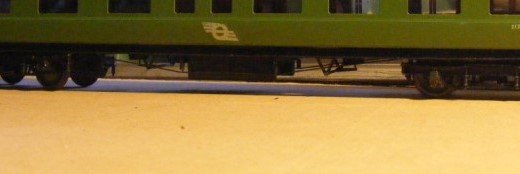

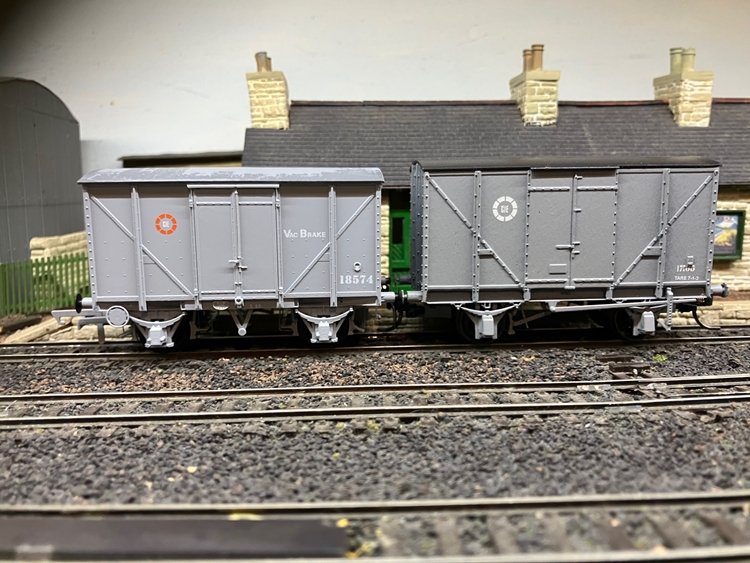
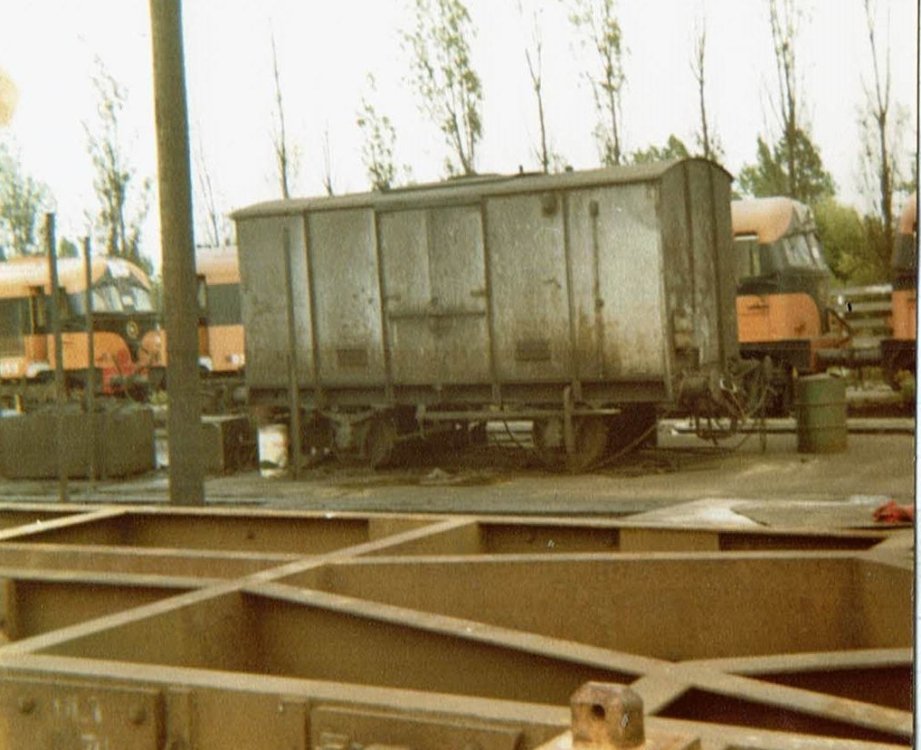
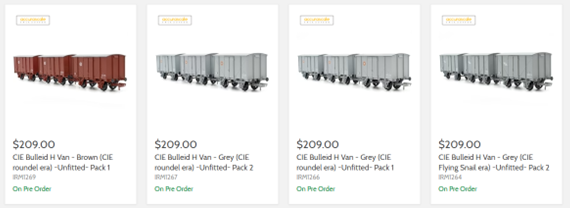
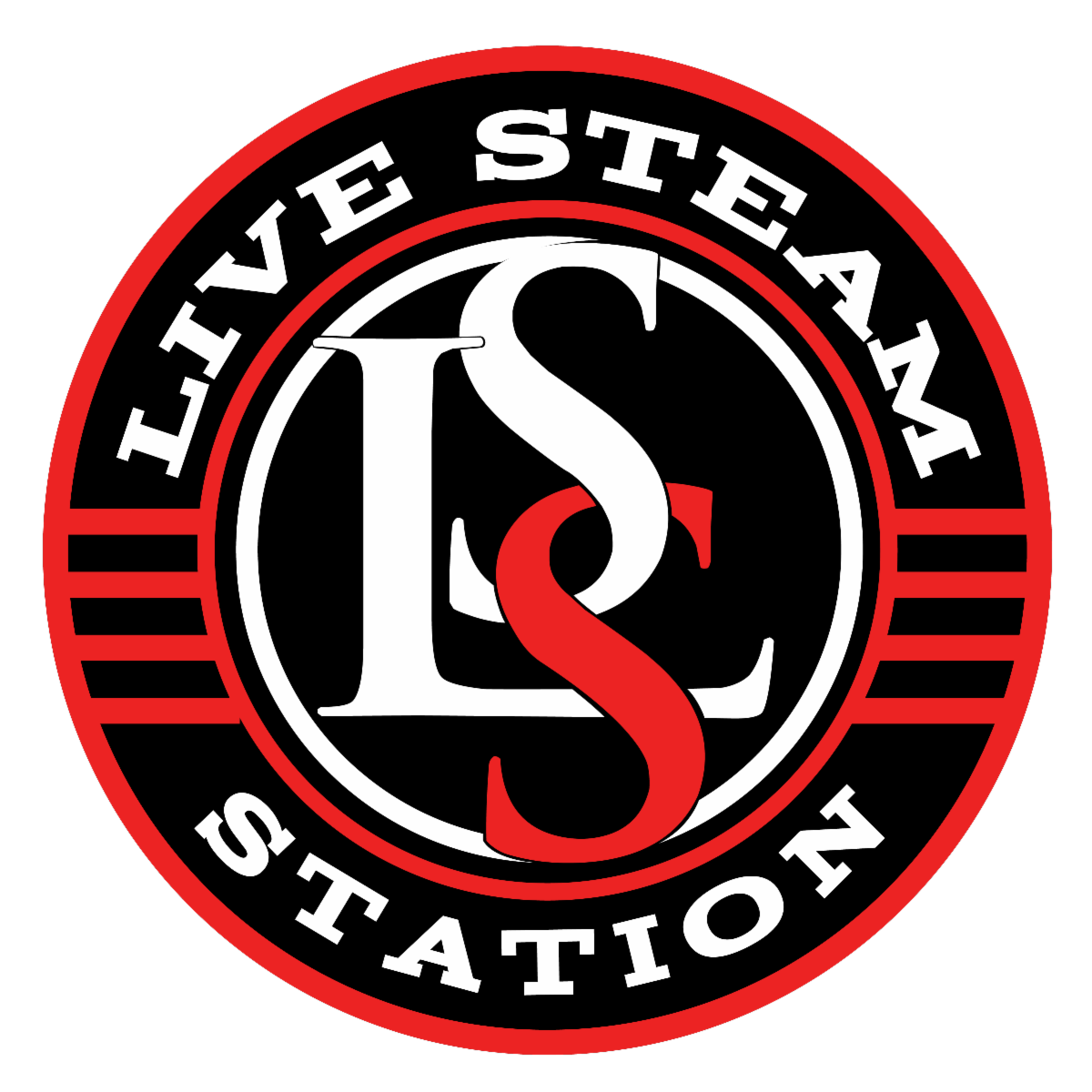
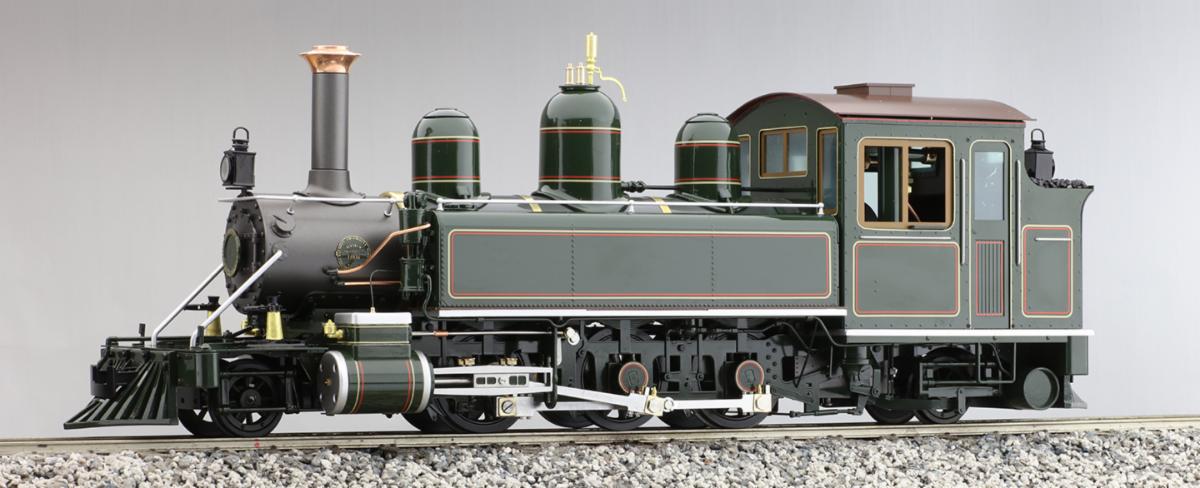
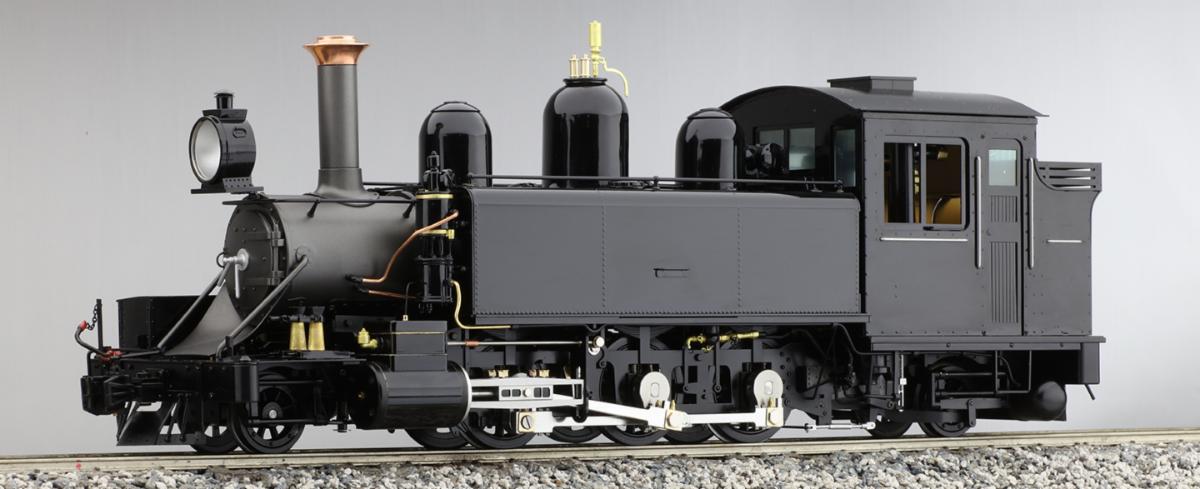


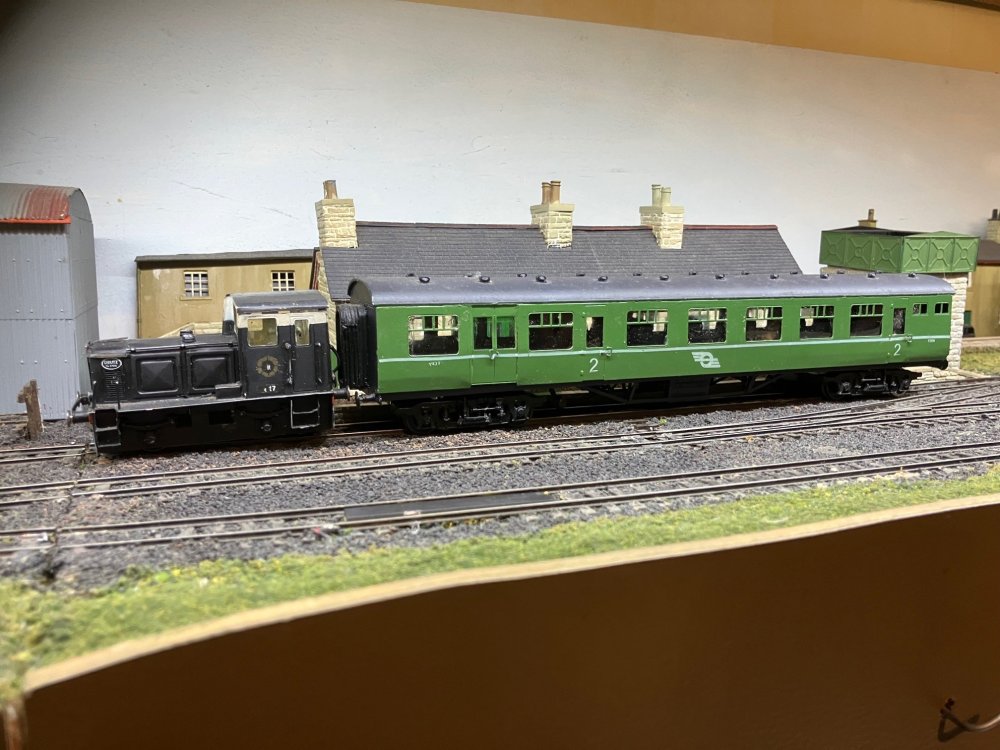
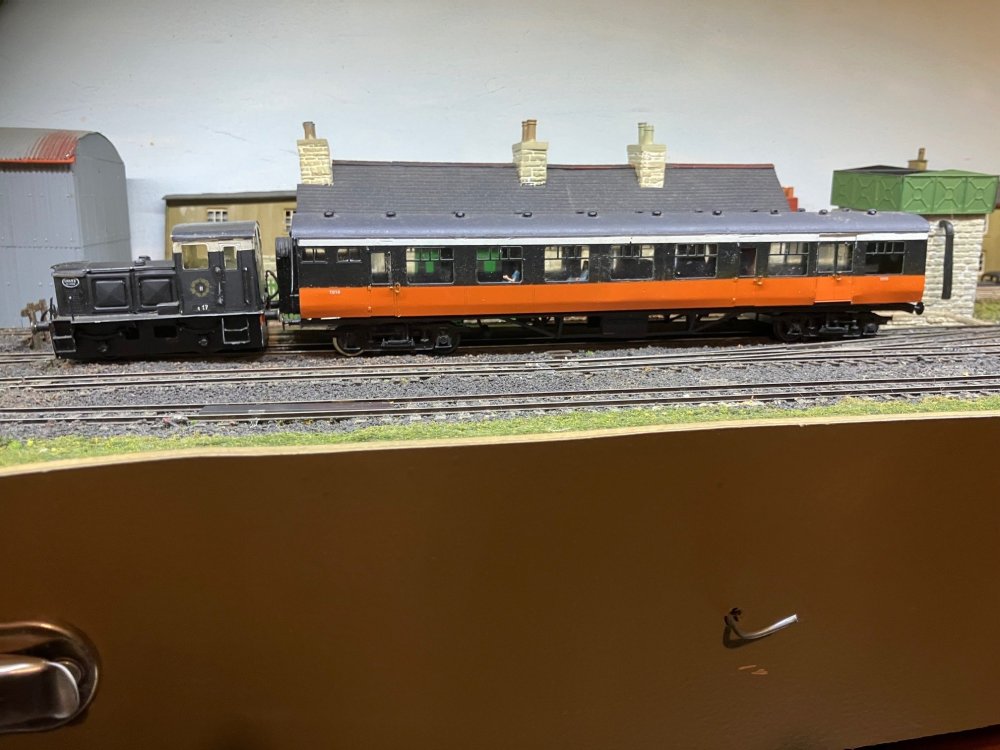
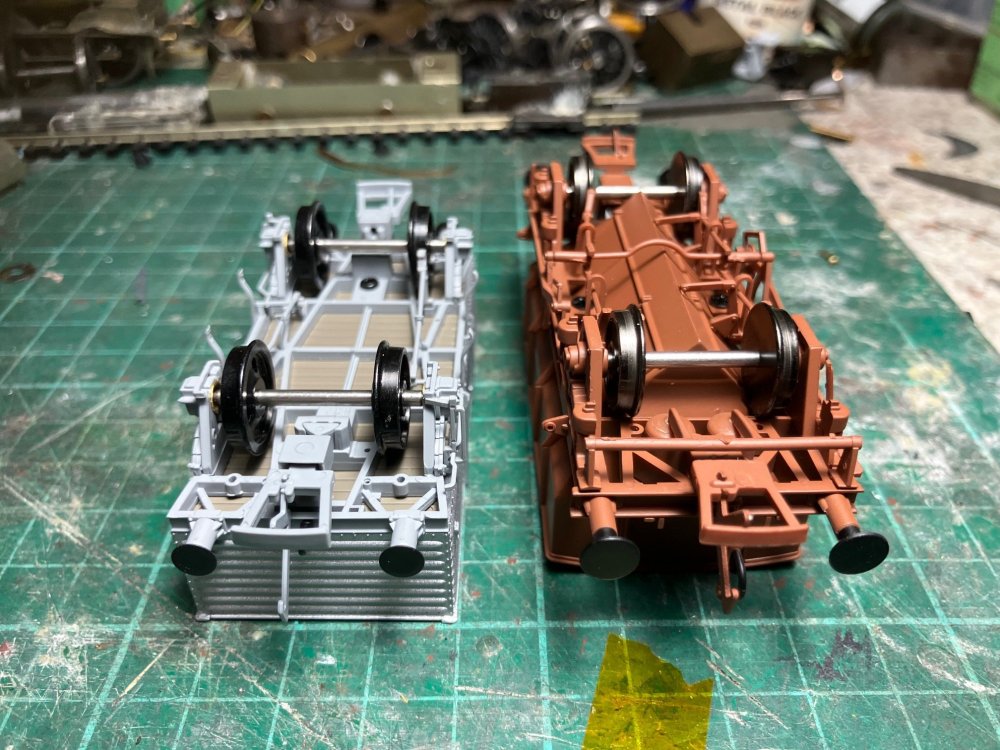
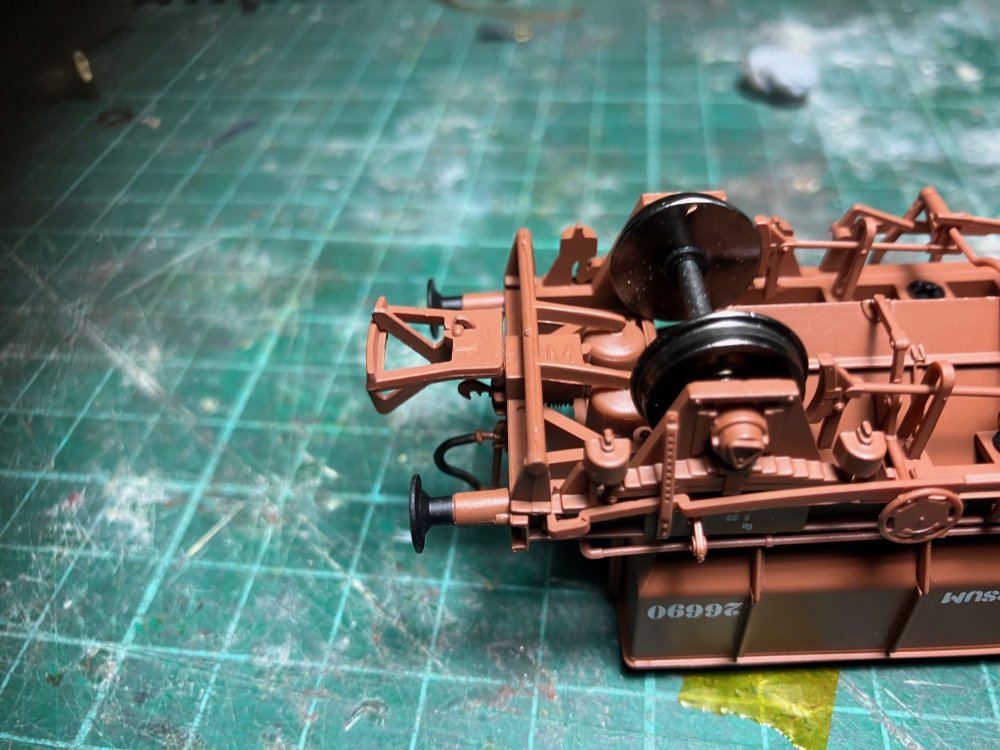


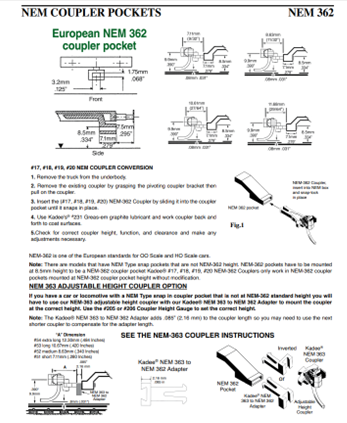
Connolly Shed + my bedroom circuit
in Irish Model Layouts
Posted · Edited by Mayner
I don't bother sealing or painting a baseboard before tracklaying its not really necessary unless you use a water/moisture absorbant material like MDF
I wouldn't worry about movement/weight of the scenery affecting the track wiring, the most important thing is to make sure the trackbase/baseboard is adequately supported/braced. Stripwood possibly 75x25 planed all round is probably the best option for baseboard framing for a 1st layout.
I would recommend 12mm ply B Grade (min surface defects 1 side good) as a minimum for a baseboard though I used some 9mm A Grade I had surplus from a job for this layout, it looked good was of adequate strength and free!
The ply framing on this layout was ripped using a powered table saw with the fence set to ensure the ply was ripped to a consistent width, I bought the saw when I was a jobbing builder.
All ply baseboard North Wharf layout started 2021, dense foam ground sheet used as track underlay.
Peco track laid on PVA(school glue!) loose ballast applied
Loose Ballast scattered on track, weights should then be placed on track to prevent movement until glue sets (a board with metal weights on top)
DCC wiring track bus/feeds black and red remaining wiring to Stationary Decoder used to operate Peco point motors.
I usually cover the baseboard edge with a painted hardboard fascia sometimes contoured to the profile of the scenery/landscaping.
Ground cover ash, ballast and grass is basically woodlands scenics scatter glued to a foam track underlay some on a bed of glue or dilute water/pva/washing up liquid using an eye dropper, embankments formed expanded polystyrene carved to shape with a knife